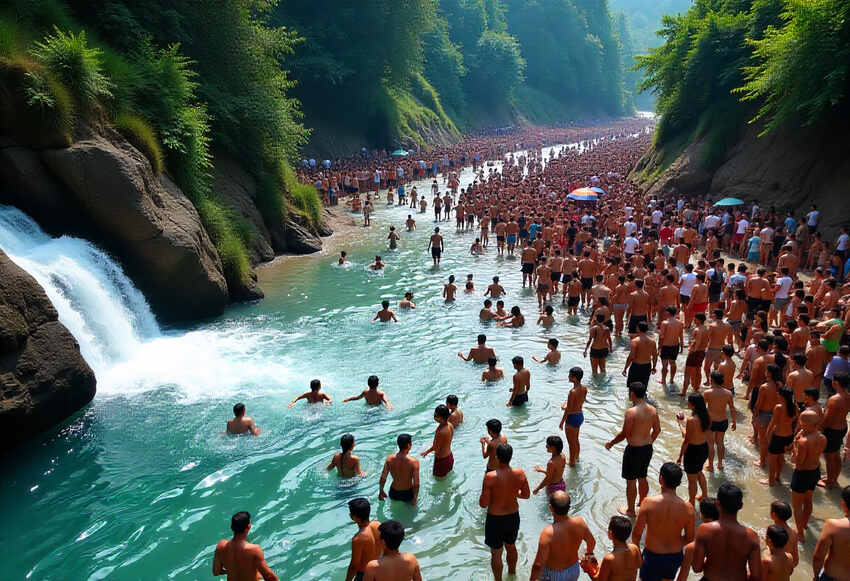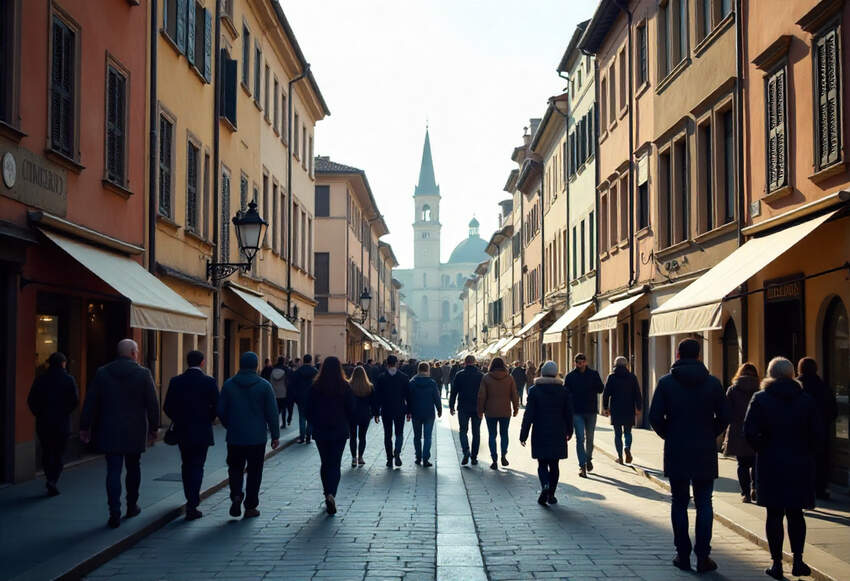Dehradun’s New 132-Acre Park Inspired By London’s Hyde Park Promises A Breathtaking Blend Of Nature, Sports, And Culture With World-Class Facilities In 2026

Dehradun is preparing to open a magnificent 132-acre park based on London’s renowned Hyde Park in 2026. This world-class park integrates sports, culture, and nature. It will provide a unique experience of rich greenery and recreational sports facilities, and the cultural events will complete the setting. The park will also feature cycling tracks, wellness areas, playgrounds for children, and art activities. It will provide a venue for community outdoor activities while promoting community building. The varied activities on offer will attract locals and tourists which will boost tourism in Dehradun, and enhance the value of public parks in India.
Next year, a new world-class park is set to open its gates to visitors at Rashtrapati Niketan, located on Rajpur Road along the Dehradun-Mussoorie highway. Spanning approximately 132 acres of lush green land, the park is being modeled after London’s iconic Hyde Park. The development aims to create a vibrant space for nature, wellness, and cultural activities, establishing itself as a major destination for tourists and locals alike.
A Vision for Recreation and Social Harmony
The 132-acre park will be designed to accommodate a variety of attractions and facilities, ensuring a comprehensive experience for every visitor. Central to the park’s design is its multifunctional recreational spaces, which will include children’s play areas, picnic lawns, and an amphitheater. The inclusion of water features, such as fountains and small artificial lakes, will add to the scenic beauty and enhance the overall atmosphere of relaxation.
Health and fitness are major components of the park’s vision. It will feature a well-designed cycling track, jogging and walking paths, and top-tier sports facilities, making it an ideal spot for those looking to stay active. The cycling track is expected to attract both casual riders and fitness enthusiasts, while the sports facilities will cater to a variety of recreational activities for all age groups.
For those seeking tranquility and a connection with nature, the park will feature a forest nature trail, providing visitors with a peaceful environment to explore the region’s natural flora and fauna. These natural features will blend seamlessly with the recreational and wellness offerings, providing an all-encompassing experience.
Visitor Amenities and Facilities
The park will also be equipped with various amenities to ensure a comfortable visit for all. A dedicated visitor facilitation center will be available to assist tourists with information and services. For those interested in horse riding, the park will include a designated area where visitors can engage in this activity amidst the park’s stunning landscapes. Art exhibitions will also be a regular feature, offering a cultural experience alongside the park’s natural beauty.
The park will also boast a cafeteria and a souvenir store, providing visitors with opportunities to relax, enjoy local snacks, and take home keepsakes that reflect the region’s culture. These additions will make the park not just a place for outdoor activities but a comprehensive destination that combines nature, art, and wellness in one location.
A Milestone in Development
The project received official approval from the President’s Secretariat and was presented as a significant step forward for the region’s tourism and local development. The blueprint for the park was crafted with input from local stakeholders, ensuring that the design resonates with the needs and desires of the community. The development has been carefully planned to ensure that the park will become a valuable resource for both residents and tourists, offering a blend of green space, cultural activities, and health facilities.
Construction work for the park is progressing rapidly, with workers and planners focused on meeting the set deadlines. The park is expected to be ready for public visits next year, marking an important milestone in the region’s urban development. The park will serve not only as a space for leisure but also as a key asset for promoting environmental sustainability and health-conscious living.
Inspiration from London’s Hyde Park
The Rashtrapati Niketan park draws inspiration from London’s Hyde Park, one of the most famous public parks in the world. Hyde Park, located in the heart of Central London, spans 350 acres and is known for its rich history and cultural significance. Opened to the public in 1637, it has since become a symbol of freedom and public expression, featuring iconic landmarks such as the Serpentine lake, the Princess Diana Memorial Fountain, and Speakers’ Corner, where individuals can freely express their views.
Just as Hyde Park offers a serene space for Londoners and tourists to relax, socialize, and engage in outdoor activities, the new park in Dehradun is set to bring similar benefits to the local community. The serene lake, walking paths, and open spaces will allow visitors to unwind while enjoying the beauty of nature.
Cultural and Wellness Hub
With its vast area and range of features, the new park will serve as an ideal destination for outdoor festivals and cultural events. The park’s amphitheater will host concerts, performances, and art shows, while the surrounding lawns will provide the perfect venue for outdoor picnics and gatherings. In addition, the park’s design will ensure ample space for health and wellness activities, including yoga sessions and fitness events, which are expected to attract visitors from across the region.
This new development marks an exciting addition to Dehradun’s tourism landscape, providing a space where visitors can connect with nature, enjoy recreational activities, and take part in cultural events—all while benefiting from the health advantages of outdoor exercise and green spaces. The park’s focus on wellness, recreation, and natural beauty aligns perfectly with global trends towards sustainable tourism and health-conscious living.
The Future of Green Tourism
As the park nears its completion, it promises to become a hub for green tourism, blending nature and modern facilities into one inviting space. Visitors can look forward to a sustainable and enriching experience, surrounded by the lush greenery of Uttarakhand. The park’s design, inspired by international standards and a vision for public well-being, sets it apart as a beacon of green tourism in the region. Its successful integration of nature, wellness, and culture will undoubtedly make it a must-visit destination for both domestic and international tourists.
Dehradun is developing a 132-acre park at Rashtrapati Niketan, after London’s Hyde Park, which integrates unparalleled world-class facilities in nature, sports, and culture. Its completion is scheduled for 2026 which will improve the tourism potential of the city and offer a scope of wellness and cultural activities for the visitors.
To conclude, the upcoming Rashtrapati Niketan park is going to be a great spot in Dehradun. It’s going to be a spot where visitors could experience the tranquility of the nature, the culture, and the wellness all in one place. Once the magnificent is completed, it’s going to be a tourist attraction and a public park which is going to be the best for the people in India and going to be a best potential for the rest of the generations.
The post Dehradun’s New 132-Acre Park Inspired By London’s Hyde Park Promises A Breathtaking Blend Of Nature, Sports, And Culture With World-Class Facilities In 2026 appeared first on Travel And Tour World.
